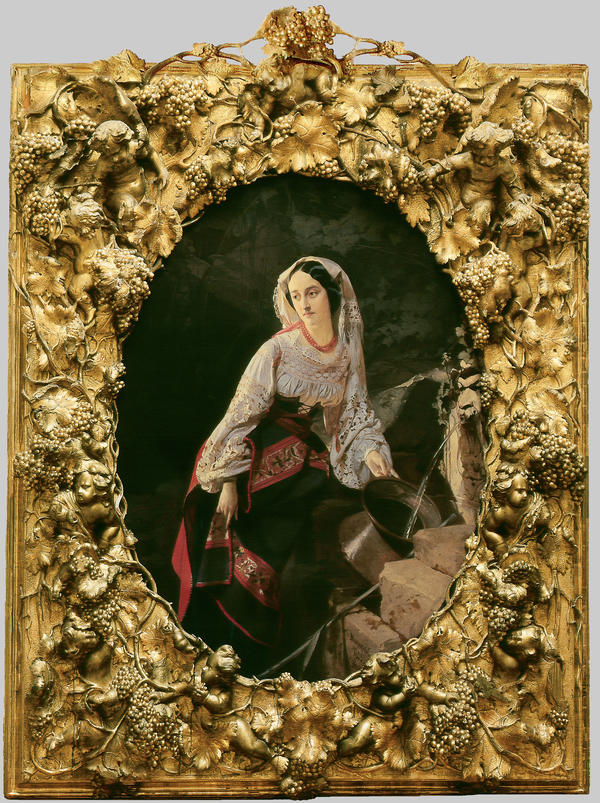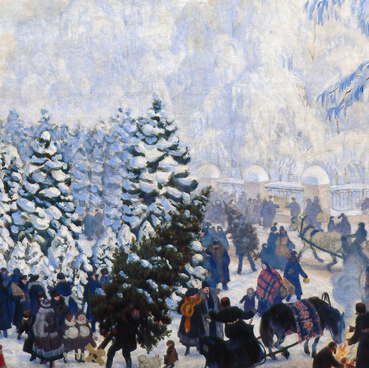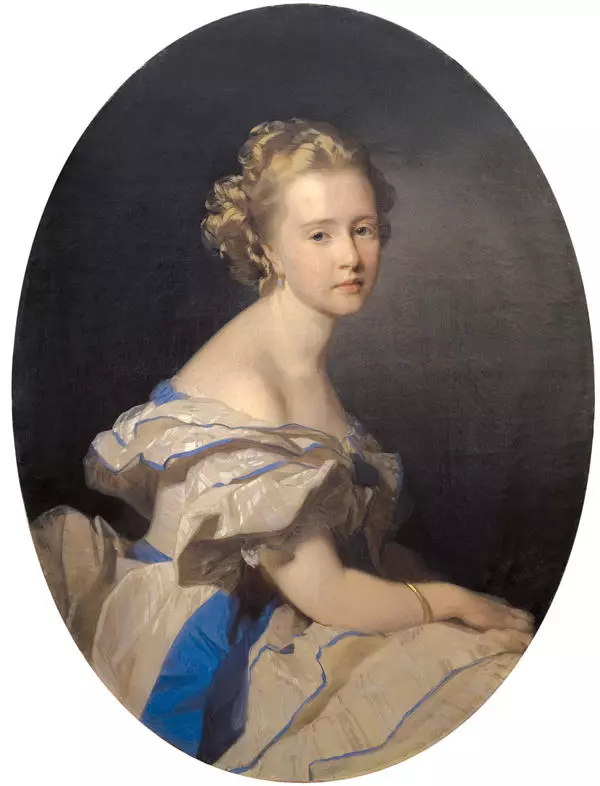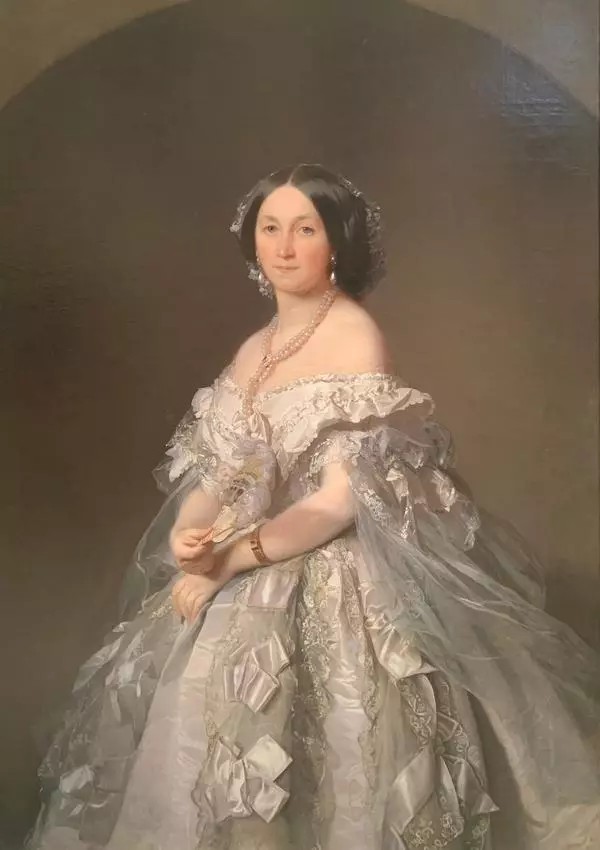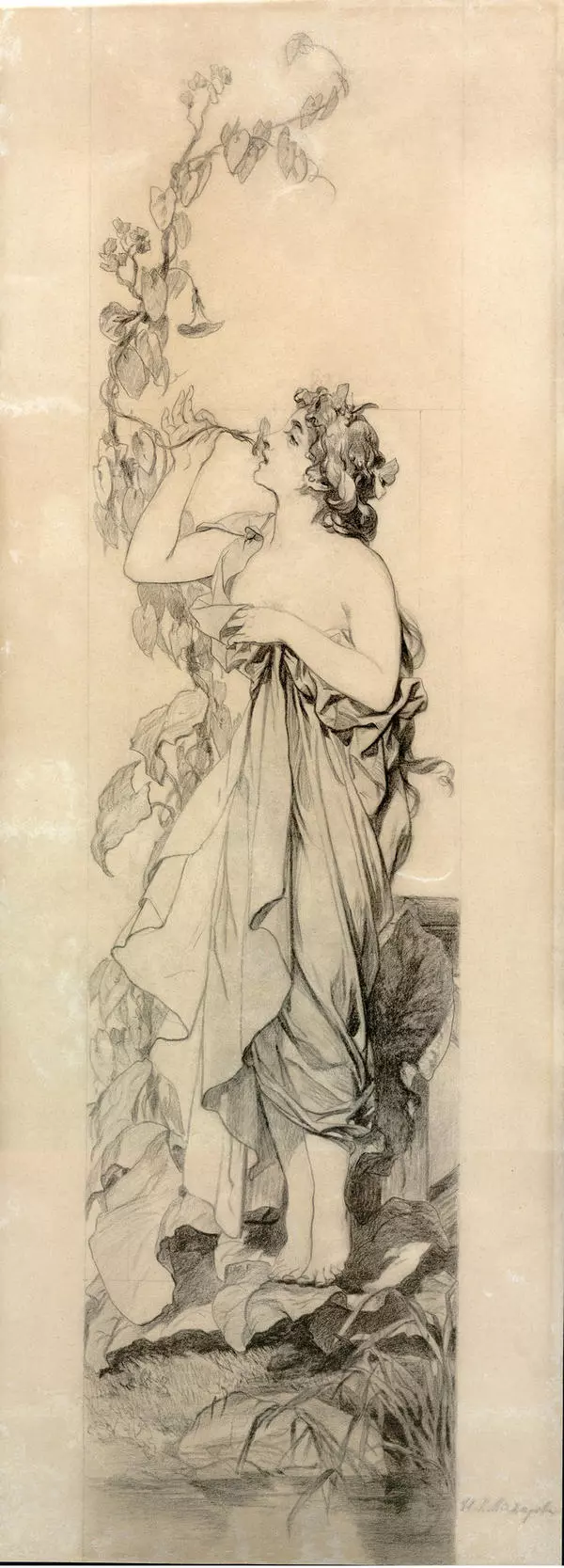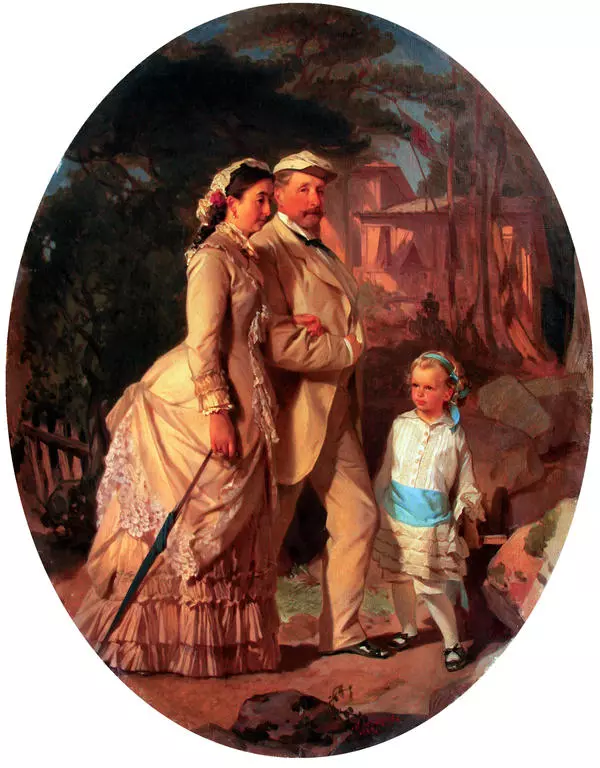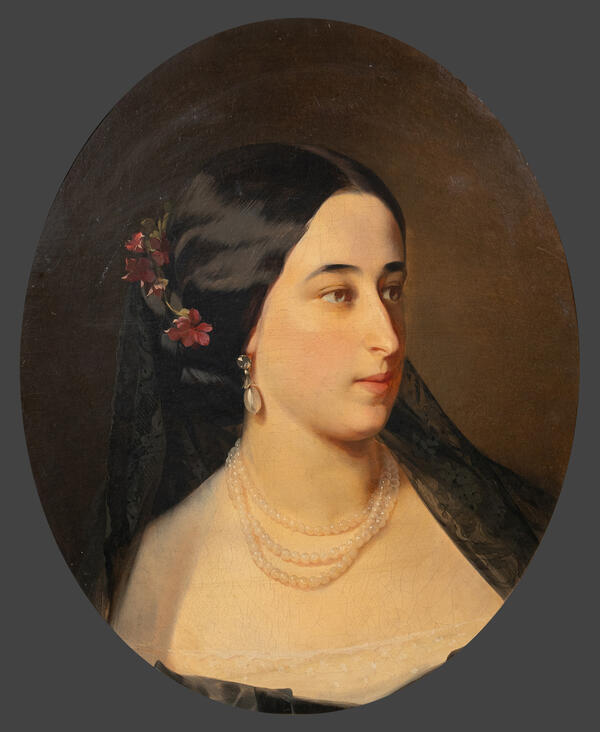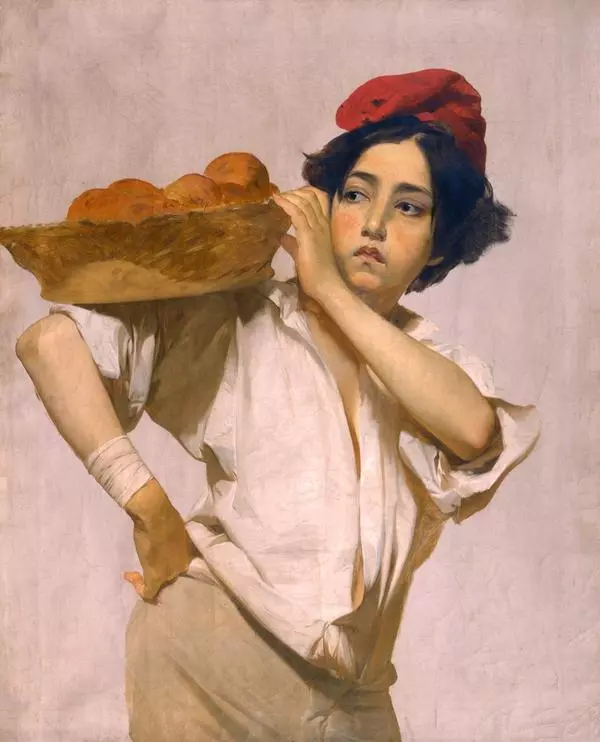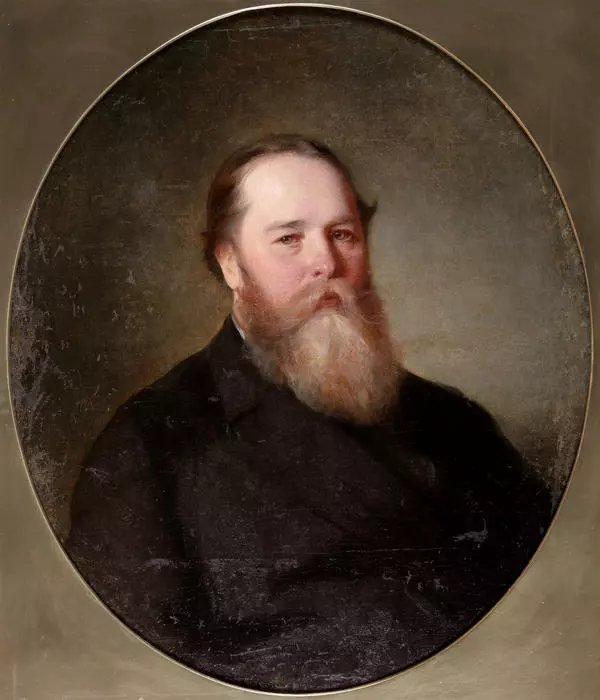Ivan Makarov is a portrait artist, drawings artist, watercolor painter, and the author of a series of monumental wall paintings on religious topics. He started painting according to the family tradition. His father graduated from the famous Stupin Arzamas School and taught drawing art in Saransk. Later he organised his own drawing school. It was under his father’s guidance that Ivan Makarov achieved his first progress in pictorial art.
In 1845, Ivan joined the Academy of Arts where he studied under the guidance of Alexey Markov, a famous teacher. In that year, Makarov received the silver medal for his painting Girls in Russian Costumes at a Party. In 1853, the artist wet to Rome due to the sponsorship of the Society for the Encouragement of Artists and the Grand Duchess Maria Nikolayevna.
Makarov created his painting Italian Woman in Rome in 1855. In the same year, he received the title of the Academy member. In the painting, the artist depicted a young woman in a national Italian costume taking water into a pitcher from the spring. Presumably, Ivan Makarov depicted the Grand Duchess Maria Nikolayevna, the daughter of Nicholas I of Russia (he was part of her retinue when being abroad).
Ivan Makarov is a representative of an academic school of painting. His work was somewhat of a parlor nature: he was good at presenting the model to his/her advantage and used the most glamourous and eye-catching painting techniques. At the same time, portraits by Makarov were very convincing and true to life. The Italian Woman is one of his brightest parlor portraits.
Makarov placed the young woman against the dark background of a hardly visible grotto twined by a grapevine — this allowed for placing the emphasis on the necessary details of her figure and clothes. To convey the textures, the artist used the enamel manner of painting with additional use of oil paint for the elements.
A luxurious gilded carved wooden frame holds the painting. Artisans from Vyatka produced it under a special commission. The carcass is made of pinewood, and the eminent parts — the high reliefs — are from hardwood: pear and linden.
In the mid-19th century, Ivan Makarov was one of the best portrait artists in Saint Petersburg. He developed his own circle of customers with many celebrities and members of the royal family among them.
Many museums and private collections hold the paintings by Makarov: the State Tretyakov Gallery, the State Russian Museum, the Research Museum of the Russian Academy of Arts and others.
In 1845, Ivan joined the Academy of Arts where he studied under the guidance of Alexey Markov, a famous teacher. In that year, Makarov received the silver medal for his painting Girls in Russian Costumes at a Party. In 1853, the artist wet to Rome due to the sponsorship of the Society for the Encouragement of Artists and the Grand Duchess Maria Nikolayevna.
Makarov created his painting Italian Woman in Rome in 1855. In the same year, he received the title of the Academy member. In the painting, the artist depicted a young woman in a national Italian costume taking water into a pitcher from the spring. Presumably, Ivan Makarov depicted the Grand Duchess Maria Nikolayevna, the daughter of Nicholas I of Russia (he was part of her retinue when being abroad).
Ivan Makarov is a representative of an academic school of painting. His work was somewhat of a parlor nature: he was good at presenting the model to his/her advantage and used the most glamourous and eye-catching painting techniques. At the same time, portraits by Makarov were very convincing and true to life. The Italian Woman is one of his brightest parlor portraits.
Makarov placed the young woman against the dark background of a hardly visible grotto twined by a grapevine — this allowed for placing the emphasis on the necessary details of her figure and clothes. To convey the textures, the artist used the enamel manner of painting with additional use of oil paint for the elements.
A luxurious gilded carved wooden frame holds the painting. Artisans from Vyatka produced it under a special commission. The carcass is made of pinewood, and the eminent parts — the high reliefs — are from hardwood: pear and linden.
In the mid-19th century, Ivan Makarov was one of the best portrait artists in Saint Petersburg. He developed his own circle of customers with many celebrities and members of the royal family among them.
Many museums and private collections hold the paintings by Makarov: the State Tretyakov Gallery, the State Russian Museum, the Research Museum of the Russian Academy of Arts and others.

